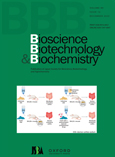[on September 9, 2017]
Visionary NOUGEIKAGAKU 100
Symposium on Natural Product Chemistry Research Area: "Chemistry of natural products which mediate various life phenomena"
- Date & venue; Nagoya University on September 9, 2017
1. Natural product chemistry: introduction and future perspective
Hiromasa Kiyota, Graduate School of Environmental & Life Science, Okayama University
Natural product chemistry focuses on small molecules that control the biomolecules responsible for life phenomena. Natural product chemistry consists of three cooperative research areas: "isolation and structure elucidation," "synthesis," and "bioassay". The goals of these small molecule research topics are to clarify unknown biological phenomena and to produce useful chemical agents. Natural product chemists have contributed greatly to the understanding of the biological "chaos" by analyzing the "cosmos" of single interactions. However, to more comprehensively understand living systems, the use of BD (big data) and AI (artificial intelligence) to attribute the single interactions into the " (cosmos)n " is a modern approach.
2. Mechanism of flower color variation
Kumi Yoshida, Graduate School of Informatics, Nagoya University
Most of the flower colors is developed by anthocyanins. Although the flower colors have a wide variety from red through purple to blue, the number of chromophores is few. We clarified the mechanism of sepal color variation of hydrangea using single cell analysis of colored cells as measurement of cell color, vacuolar pH, content of Al, pigment and co-pigment. The sepal color is developed with a balance of those factors.
3. Chemical resolution of the mystery of fairy rings
Hirokazu Kawagishi, Research Institute of Green Science and Technology, Shizuoka University
For centuries, people over the world have been mystified by the formation of rings of accelerated or suppressed plant growth in woodlands and grassy fields. The rings sometimes erupt with mushrooms. Myth led these geometric patterns to be called fairy rings. In 2010, we discovered that the "fairies" (growth regulators) were 2-azahypoxanthine (AHX) and imidazole-4-carboxamide. In 2014, we found a common metabolite of AHX in plants, 2-aza-8-oxohypoxanthine.
4. Immune regulation by novel α-galactsylceramides derived from marine sponge
Yasuyuki Ishii, REGiMMUNE Co., Ltd.
Novel α-galactosylceramides (α-GalCer), agelasphins were isolated from the marine sponge Agelas mauritianus by assessing in vivo anti-tumor activities. Based on the chemical structure of a representative agelasphin, optimized α-GalCer, KRN7000 has been generated by a total synthetic method. Invariant natural killer T (iNKT) cells activated by KRN7000-loaded CD1d molecule on the antigen-presenting cells (APCs) are capable of performing not only anti-tumor activities but also immune tolerance. Ww are developing liposomal KRN7000 to induce immunoregulatory functions of iNKT cells, preferentially.
5. Chemistry of bioluminescence in the past one century
Katsunori Teranishi, Graduate School of Bioresources, Mie University
Bioluminescence is the production of light by living organisms. The bioluminescence mechanisms of various organisms such as fireflies, jellyfishes, and bacteria have been elucidated in the past one century. In this symposium, mechanisms underlying the light emission of the luminous squid Watasenia scintillans and fungi are mainly introduced.
6. Approach to elucidation of biosynthetic pathway towards tetrodotoxin
Mari Yotsu-Yamashita, Graduate School of Agricultural Science, Tohoku University
Tetrodotoxin (TTX), known as the pufferfish toxin, is a specific and potent blocker of voltage gated sodium channel. The biosynthetic pathway towards TTX is still unclear. We have approached to this problem based on the structures of natural TTX analogues, and also TTX-related compounds, isolated from newt and pufferfish. Interestingly, some TTX analogues are specific to newt or pufferfish, suggesting the possibility that the biosynthetic pathways to TTX in terrestrial and marine environments are not same.
7. Strigolactones: a class of carotenoid-derived plant hormones
Shinjiro Yamaguchi, Graduate School of Life Sciences, Tohoku University
Strigolactones were first discovered by their biological activity to stimulate seed germination of root parasitic plants. In 2005, strigolactones were discovered as plant-derived chemical signals in the symbiotic interactions with arbuscular mycorrhizal fungi. In 2008, our group and another research group discovered that strigolactones are plant hormones that regulate shoot branching in plants. We are currently studying the biosynthetic pathway and perception and signaling mechanisms of strigolactones.
8. Long-distance flowering signal "florigen"
Takashi Araki, Graduate School of Biostudies, Kyoto University
It was proposed in late 1930s that a flowering hormone named "florigen" is produced in leaves subjected to appropriate day-lengths and is transported to the shoot apex where it stimulate flower bud differentiation. Despite various efforts for nearly 70 years, the nature of florigen has remained elusive. Several laboratories including my group in Kyoto showed that FT/Hd3a protein serves as florigen and elucidated molecular mechanism by which it functions. Prehistory and history of florigen research were summarized in the lecture.
9. Aim to understand of host selection mechanism in swallowtail butterflies through analysis of gustatory receptors
Katsuhisa Ozaki, JT Biohistory Research Hall
Larva of swallowtail butterflies use special plant as their host. It has correlation between speciation and host shift in the swallowtail butterflies' family. We identified several gustatory receptor genes from swallowtail butterfly species to understand the mechanism of host selection. Those genes are involved in host recognition and diversification of butterflies.
10. Aim to understand of host selection mechanism in swallowtail butterflies through analysis of gustatory receptors
Katsuhisa Ozaki, JT Biohistory Research Hall
Larva of swallowtail butterflies use special plant as their host. It has correlation between speciation and host shift in the swallowtail butterflies' family. We identified several gustatory receptor genes from swallowtail butterfly species to understand the mechanism of host selection. Those genes are involved in host recognition and diversification of butterflies.












































